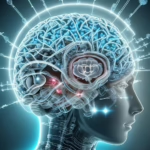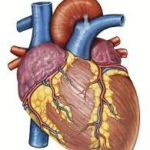Muscle Spasms: When to Worry and When to Relax
Muscle spasms are involuntary contractions of one or more muscles, often resulting in pain, discomfort, and sometimes debilitating symptoms. They can occur in any muscle in the body, from the legs and back to the hands and feet. Though often considered a common and benign occurrence, muscle spasms can sometimes be indicative of underlying health issues. Understanding the nuances of muscle spasms — when to worry and when to relax — is crucial for optimal health and well-being.
Understanding Muscle Spasms
-
What is a Muscle Spasm?
A muscle spasm, often referred to as a cramp, occurs when a muscle involuntarily and forcibly contracts. This contraction can last for a few seconds to several minutes, and it can be accompanied by pain or discomfort. Muscle spasms are common in athletes, those with certain medical conditions, and even in perfectly healthy individuals.
-
Types of Muscle Spasms
- Clonic Spasms: These are rhythmic and repetitive muscle contractions that can be seen in conditions like epilepsy.
- Tonic Spasms: These involve prolonged muscle contractions and are often more painful, lasting for longer periods.
- Focal Spasms: These are confined to a specific muscle group and are common in conditions like dystonia.
- Generalized Spasms: Affect multiple muscle groups and can be seen in systemic conditions.
-
Common Causes
The causes of muscle spasms are various and can be divided into several categories:
- Dehydration: Loss of fluids and electrolytes, particularly during exercise or hot weather, can lead to spasms.
- Overuse: Repetitive use of a muscle, particularly in sports or strenuous activities, can trigger spasms.
- Inactivity: Paradoxically, not using a muscle enough can also lead to spasms.
- Mineral Deficiencies: Low levels of potassium, calcium, or magnesium may contribute to spasms.
- Medical Conditions: Conditions like multiple sclerosis, diabetes, or thyroid issues can predispose individuals to muscle spasms.
Clinical Contexts
Muscle spasms can occur in a number of clinical contexts, and their significance often depends on underlying health conditions.
-
Athletes and Active Individuals
Athletes frequently experience muscle spasms, often linked to overexertion or improper warm-up routines. Dehydration can exacerbate these issues, as can deficiencies in critical minerals.
-
Sedentary Individuals
Those who lead a sedentary lifestyle may experience spasms due to prolonged inactivity, poor posture, and muscle weakness. Conditions like sciatica or herniated discs can exacerbate discomfort.
-
Older Adults
Muscle spasms become more prevalent as people age, often due to decreased physical activity, blood flow changes, and age-related muscle loss. Chronic conditions, such as arthritis, may also contribute.
-
Chronic Conditions
Individuals with chronic medical conditions may be more susceptible to muscle spasms. Conditions like diabetes, fibromyalgia, and peripheral artery disease can all play a role.
When to Worry
While many muscle spasms are harmless and transient, certain signs may warrant medical attention.
-
Duration and Frequency
If muscle spasms are prolonged (lasting more than a few minutes) or occur frequently, it may indicate a more serious problem.
-
Associated Symptoms
If spasms are accompanied by symptoms such as swelling, redness, weakness, or changes in skin color, it may indicate an underlying medical issue.
-
Impact on Daily Life
Muscle spasms that interfere with daily activities, such as walking or typing, should be evaluated.
-
Underlying Health Conditions
Individuals with existing health conditions (like kidney disease, neurological disorders, etc.) may need to be more vigilant regarding muscle spasms.
-
Medication Side Effects
Some medications can increase the likelihood of muscle spasms. If muscle spasms coincided with starting new medication, consult a healthcare professional.
When to Relax
In most cases, muscle spasms are benign and can be managed at home. Here are scenarios when it is generally safe to relax:
-
Short Duration
If a muscle spasm lasts for a few seconds to a couple of minutes and is not accompanied by severe pain or other symptoms, it is usually harmless.
-
Self-Resolving Spasms
Muscle spasms that resolve on their own without intervention are typically nothing to worry about.
-
Known Triggers
If you have identified specific triggers (like exercise or dehydration) that you can manage effectively, then relaxation is appropriate.
Management Strategies
Knowing how to manage muscle spasms can be incredibly beneficial. Here are some strategies to consider:
-
Hydration
Ensuring adequate hydration before, during, and after exercise is crucial. Water is essential, but replenishing electrolytes may also be necessary, particularly in hot weather or intense exercise.
-
Stretching and Warm-Ups
Proper stretching and warm-up routines can prevent spasms, especially in athletic contexts. Always incorporate both flexibility and strength exercises into your routine.
-
Dietary Considerations
Consuming a well-balanced diet rich in essential vitamins and minerals can mitigate the risk of muscle spasms. Pay particular attention to electrolytes like potassium, calcium, and magnesium.
-
Heat and Cold Therapy
Applying heat to tense muscles can help relieve spasms, as can cold therapy for muscle soreness. Experiment with both to find what works best for you.
-
Massage and Physical Therapy
Gentle massage or physical therapy can alleviate muscle tension and reduce the frequency of spasms.
-
Medications
Over-the-counter pain relievers may be effective for occasional spasms. Always consult with a healthcare professional before starting any medication.
Seeking Professional Help
There are instances when seeking professional help is essential:
-
Persistent Symptoms
If muscle spasms persist or worsen over time, professional evaluation is warranted.
-
Acute or Severe Pain
Severe pain accompanying spasms can indicate serious conditions such as muscle tears, ruptured tendons, or circulatory issues.
-
Neurological Symptoms
If spasms are accompanied by other neurological symptoms such as numbness, tingling, weakness, or coordination problems, immediate medical attention should be sought.
-
Urgent Conditions
Symptoms that could indicate serious conditions, like myocardial infarction (heart attack) or deep vein thrombosis (DVT), require urgent evaluation. If muscle spasms occur along with symptoms like chest pain, shortness of breath, or severe leg swelling, do not hesitate to seek medical help.
Lifestyle Modifications
Incorporating healthy lifestyle modifications can drastically improve muscle health and reduce the occurrence of spasms. Here are some practical steps:
-
Regular Exercise
Engage in regular physical activity, focusing on both strength and flexibility. Yoga and pilates, for example, can improve muscle control and reduce spasms.
-
Adequate Sleep
Ensure you are getting enough restorative sleep. Sleep deprivation can worsen muscle tension and result in spasms.
-
Stress Management
Prolonged stress can lead to muscle tension and increased spasms. Incorporating relaxation techniques, such as meditation or deep-breathing exercises, can be beneficial.
-
Avoiding Excessive Caffeine and Alcohol
Both substances can lead to dehydration and interfere with electrolyte balance. Moderation is key.
Conclusion
Muscle spasms can be a benign annoyance for many, but they have the capacity to become more serious in specific contexts. By understanding when to worry and when to relax, individuals can take proactive steps to manage spasms effectively. A combination of hydration, proper nutrition, exercise, and relaxation strategies can help mitigate the risk of spasms. Nonetheless, being aware of significant warning signs and seeking professional help when necessary can safeguard against more severe underlying issues.
References
- Mayo Clinic. “Muscle Cramps: Causes, Symptoms, and Diagnosis.” Mayo Clinic.
- WebMD. “Muscle Cramps: Overview.” WebMD.
- Cleveland Clinic. “Muscle Cramps: Causes and Treatment.” Cleveland Clinic.
- Healthline. “What Causes Muscle Cramps?” Healthline.
- American Academy of Family Physicians. “Muscle Cramping.” AAFP.
- National Institute of Health. “Dietary Supplements.” NIH.


























Add Comment